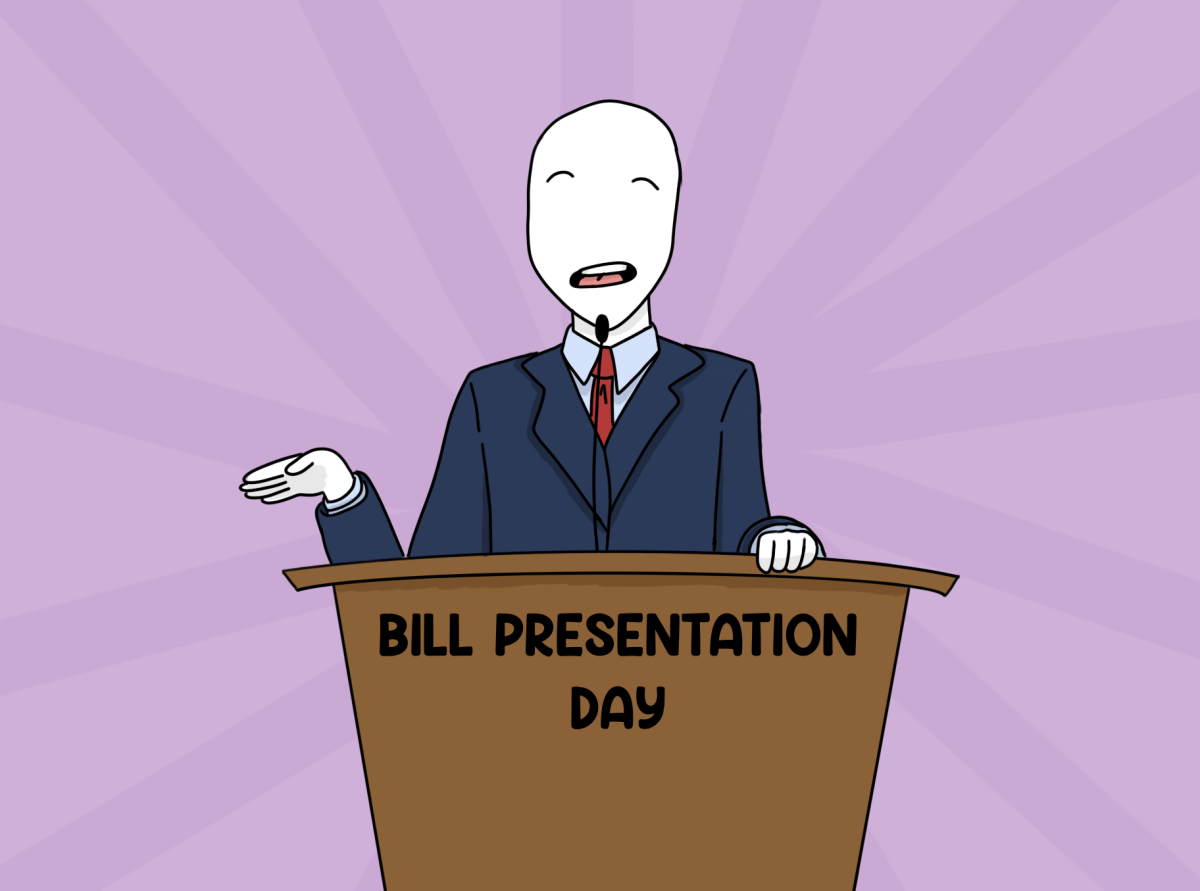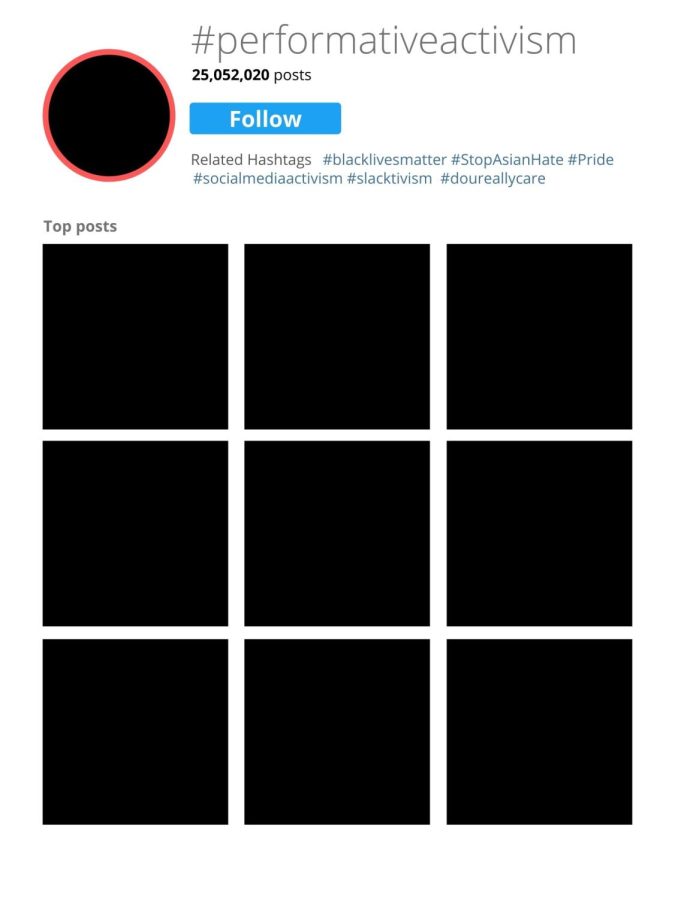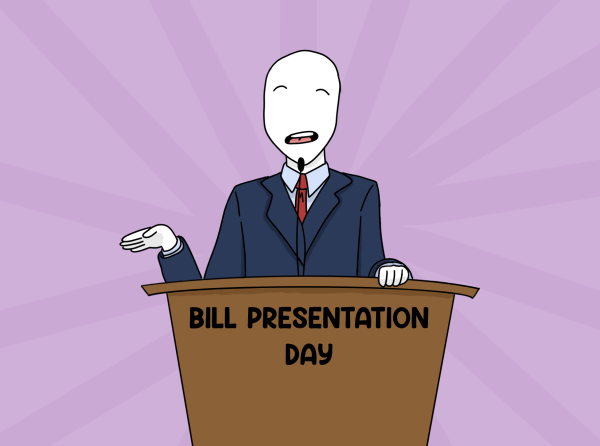Opinion: Effective activism requires commitment and cannot be secluded to social media
Social media platforms are popular ways for people to bring attention to causes they care about. However, desired changes can’t take place if claims of support are not followed by action.
Performative activism, sometimes called “slacktivism,” involves engaging in acts intended to show one’s support for a cause, but with a greater intention of upholding one’s reputation for social profit rather than genuinely contributing to a solution.
The use of online platforms to raise awareness and work towards the goals of social or political movements has increased greatly in the digital age. Social media is an accessible platform that gives people a voice. However, its effectiveness as a tool for activism can be greatly hindered when millions of users opt for inaction, and their performative gestures drown out marginalized voices and relevant information.
If you actually care about a cause, you have to be committed to taking measurable, concrete actions that go beyond the screen of your phone. Activism involves doing research and having an in-depth understanding of the issues you’re looking to support, listening to the experiences of others, getting involved with groups or organizations and ultimately, campaigning for change.
Unfortunately, the growing trend of performative activism has allowed people to say they care about something and then go on their merry way without really committing to it.
In recent years, there have been many examples of performative activism, especially online.
Following George Floyd’s murder in late May 2020, cities were filled with protestors in historic numbers as the Black Lives Matter movement was rekindled. At the same time, social media was filled with black squares, meant to show support against police brutality. However, clicking ‘post’ on Instagram or hitting the ‘like’ button on a Tweet has yet to solve the actual issue of systemic racism or police brutality; it’s a far cry from the petitioning, lobbying, protesting or voting that can lead to a lasting change.
A similar example of performative activism on social media was seen not even a year after Floyd’s death.
In March 2021, after eight Asian American women were killed in Atlanta, #StopAsianHate trended on Twitter. The hashtag was paired with general statements of solidarity, but it’s one thing to say you stand in solidarity with, for example, the Asian American Pacific Islander community, and another to actually understand their history and the mechanisms underlying their current challenges.
Within weeks, interest in #StopAsianHate died down, but hate crimes have remained a prominent issue within the AAPI community.
The gap between hashtagging a phrase and showing up to take a stand against racial discrimination is wide. Words are powerful, but they’re not enough by themselves.
In some ways, inundating social media with well-intentioned, albeit surface-level and even uninformed, demonstrations of support can detract from the issues themselves and unintentionally make people care less.
Useful information and resources may get buried underneath the flood of identical posts, and after constant exposure to the same content, attention shifts elsewhere as people’s brains adapt, messages become diluted and the real problems remain unsolved.
However, what’s more detrimental is the illusion that a lot of people are working on the goal of change, based upon the overload of social media activism, when in reality, many of them are just along for the ride.
According to the concept of social loafing, people may put less effort into achieving a goal when they feel that others are working on it also. When people see their feed filled with displays of support and assume others are handling the issue, they are less inclined to contribute much themselves, and in the end, little changes if at all.
Performative activism is self-serving. It is empty of impact, and it can even be harmful in some cases.
However, it should be noted that individual social media users aren’t the only ones liable to engage in performative activism. Corporations can be especially guilty of feigning support for a cause when they only want to maintain their brand.
In some cases, companies that may have had a history of ethical issues, attempt to capitalize on social movements without addressing their complicity. This “woke-washing” is simply laziness. There’s certainly no real effort to address the company’s issue and mend its reputation, let alone contribute to a social movement.
Other companies engaging in corporate performative activism might use times like Pride Month to rainbow-ify their content and market Pride-themed items aimed at acquiring the purchasing power of LGBTQ+ consumers without legitimately wanting to support the LGBTQ+ community. Such rainbow capitalism has no interest in enacting change. And, once Pride Month is over, companies peel off the rainbow logo and it’s back to ‘business as usual.’
Simply put, it’s not enough to wave a rainbow flag for 30 days out of the year. The key to making a positive impact is authenticity.
If a corporation is genuinely interested in being an ally, it should try to donate to related causes year-round, support legislation protecting LGBTQ+ rights, support its LGBTQ+ employees through forward-thinking workplace policies, provide service to LGBTQ+ customers, work with LGBTQ+ businesses and creators and also refuse to work with businesses that support homophobic and/or transphobic organizations.
The formula remains the same for all other causes. The policies and practices of companies and the actions of individuals should reflect their devotion to a cause.
Whether it’s Black History Month or Pride Month or, frankly, any month of the year, true activism can’t be derived from the desire to make a profit, social or monetary. Online platforms can be a good way to educate others and encourage them to get involved with an issue, but if we want to see changes in the real world, we must move our efforts beyond the digital space and into the real world.
Your donation will support the student journalists of Rutherford B. Hayes High School. Your contribution will allow us to purchase equipment and cover our annual website hosting costs.

Amanda Stevens (she/her) is a senior at Hayes. This is her second year on the Talisman staff. She enjoys music, dancing, and also plays violin in symphony...





































